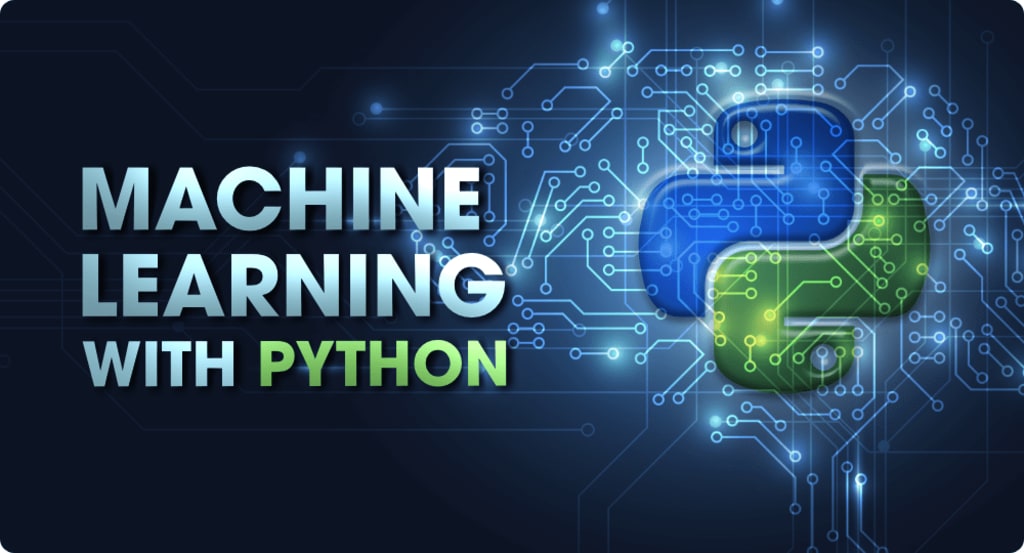
In the realm of data science and AI ML services, Python has emerged as a powerhouse programming language. With its simplicity, versatility, and a rich ecosystem of libraries, Python has become the go-to choice for developers and researchers delving into machine learning. In this blog, we will explore the fascinating combination of Python and machine learning, understanding why Python is an excellent tool for ML projects, and showcasing some of the essential libraries and frameworks that make this duo so potent.
Why Python for Machine Learning?
Python's Popularity: Python's rise in popularity can be attributed to its ease of use, readability, and a large community of developers. Its intuitive syntax allows beginners to quickly grasp the language, while its robustness and scalability cater to the needs of seasoned professionals.
Versatility and Flexibility: Python is a general-purpose language, meaning it can be used for a wide range of applications. This flexibility is especially advantageous for machine learning projects, as Python seamlessly integrates with other data science tools and frameworks.
Vast Ecosystem: Python boasts a vast ecosystem of libraries and frameworks specifically tailored for machine learning. This extensive collection includes popular libraries like NumPy, Pandas, and Matplotlib, which provide essential functionality for data manipulation, analysis, and visualization.
Essential Libraries for Machine Learning in Python:
a) NumPy: NumPy is the fundamental library for scientific computing in Python. Its powerful array data structure and extensive collection of mathematical functions make it a cornerstone for numerical operations in machine learning.
b) Pandas: Pandas is a versatile library for data manipulation and analysis. It offers high-performance, easy-to-use data structures, such as DataFrames, which are ideal for organizing and preprocessing data before feeding it into machine learning algorithms.
c) Scikit-learn: Scikit-learn is a popular machine learning library that provides a wide range of algorithms and tools for classification, regression, clustering, and more. It simplifies the implementation of complex machine learning models and offers extensive support for model evaluation and validation.
d) TensorFlow: Developed by Google, TensorFlow is a powerful open-source library for building and deploying machine learning models. Its computational graph abstraction and automatic differentiation make it a go-to framework for deep learning applications.
e) Keras: Keras is a user-friendly deep learning library that provides a high-level API for building and training neural networks. It seamlessly integrates with TensorFlow and allows rapid prototyping of deep learning models with minimal code.
Python Frameworks for Machine Learning:
a) PyTorch: PyTorch is a popular deep learning framework known for its dynamic computational graph and flexibility. Its intuitive interface and extensive community support have made it a favorite among researchers and practitioners in the field of deep learning.
b) Theano: Theano is a Python library that enables efficient mathematical computations, particularly for deep learning tasks. Though it is no longer under active development, it still remains a valuable tool for certain applications and research projects.
c) MXNet: MXNet is a flexible and efficient deep learning framework that supports both imperative and symbolic programming. It offers a user-friendly API and seamless integration with other Python libraries, making it a suitable choice for a variety of ML projects.
Real-world Applications of Python in Machine Learning:
a) Natural Language Processing (NLP): Python's simplicity and the availability of libraries like NLTK and SpaCy make it an excellent choice for NLP tasks, such as sentiment analysis, text classification, and language translation.
b) Computer Vision: Python, along with libraries like OpenCV and scikit-image, has empowered developers to build robust computer vision applications, including object detection, image classification, and facial recognition.
c) Recommender Systems: Python-based machine learning algorithms have been pivotal in creating personalized recommendation systems in various domains, such as e-commerce, streaming services, and social media platforms.
Conclusion:
Python has undoubtedly revolutionized the field of machine learning with its ease of use, flexibility, and extensive library support. Its popularity continues to grow as more developers and researchers recognize its capabilities in building sophisticated machine learning models. By harnessing the power of Python and its ecosystem, we can unlock new horizons in artificial intelligence and data science, leading to groundbreaking advancements in various domains. So, if you're venturing into the exciting world of machine learning, Python is your perfect companion to embark on this transformative journey.






Comments
There are no comments for this story
Be the first to respond and start the conversation.